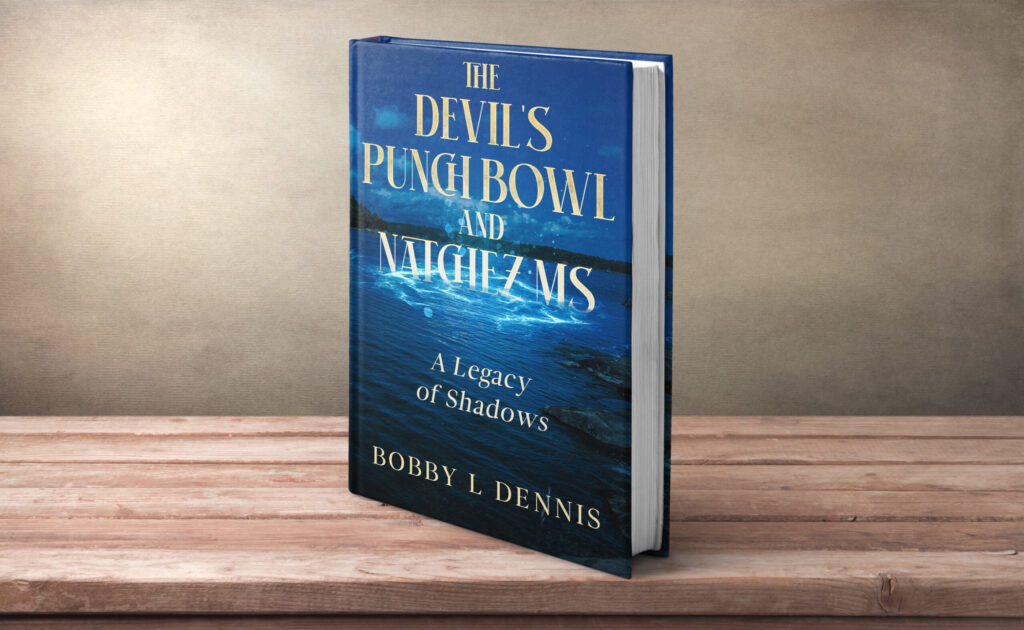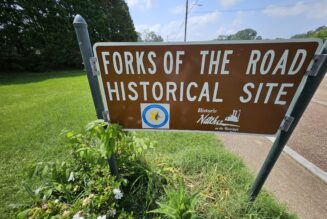The Devil’s Punch Bowl: A Historical Reflection Through Bobby L. Dennis’s Lens
The Devil’s Punch Bowl, located in Natchez, Mississippi, is one of the most haunting yet profoundly important historical sites in the American South. On the surface, it appears to be a picturesque natural basin carved into the bluffs along the Mississippi River. Yet, beneath its lush greenery lies a tragic story tied to the Civil War and its aftermath, particularly the plight of freed African Americans who sought liberty in the years following Emancipation. Bobby L. Dennis’s work on the Devil’s Punch Bowl provides a vivid, uncompromising, and often heartbreaking view of the sacrifices, injustices, and struggles endured by formerly enslaved people as they sought to establish new lives in freedom.
This blog will provide a comprehensive 3,000-word exploration of the Devil’s Punch Bowl as told through Bobby L. Dennis’s perspective, weaving together history, memory, and reflection. We will explore the site’s geography, historical context, conditions endured by freed people, its symbolism in African American history, Dennis’s contributions to our understanding, and its enduring legacy as both a warning and a monument to resilience.
Geography and Natural Setting of the Devil’s Punch Bowl
The Devil’s Punch Bowl is a large, bowl-shaped geological formation on the outskirts of Natchez. With steep bluffs and thick vegetation, it looks serene today, a natural amphitheater created over thousands of years by water erosion. However, its physical isolation and natural enclosure made it an ideal—if tragic—place for containment.
During the Civil War, Natchez became a major landing point for freedpeople seeking refuge under Union occupation. After the war, thousands of newly emancipated African Americans poured into Natchez in search of safety and opportunity. The sheer influx of people overwhelmed the city, and the Union Army, unprepared for such numbers, herded many into the Devil’s Punch Bowl, effectively turning it into an internment camp.
Historical Context: Emancipation and the Promise of Freedom
The Emancipation Proclamation of 1863 symbolized freedom for millions of enslaved African Americans. Yet, for many, the reality of freedom was fraught with uncertainty, danger, and betrayal. Freedpeople fled plantations in droves, moving toward Union-controlled areas in hopes of safety. Natchez, a strategic river city, became a magnet for thousands.
Union officials faced a dilemma: they had to manage overwhelming numbers of refugees while still prosecuting the war. Camps like the one at the Devil’s Punch Bowl were established to contain freedpeople, but these camps often lacked necessities. Instead of offering freedom and dignity, they became overcrowded, unsanitary, and deadly.
Life and Death Inside the Devil’s Punch Bowl
According to accounts, including those brought forward by Bobby L. Dennis, conditions inside the Punch Bowl were horrific:
- Overcrowding: Thousands of freedpeople were confined in the basin, far beyond the land’s capacity.
- Lack of Sanitation: With little clean water and poor waste disposal, disease spread quickly.
- Starvation and Malnutrition: Supplies were scarce, and many perished from hunger.
- Disease: Smallpox, dysentery, and other illnesses claimed countless lives.
Many who entered the Punch Bowl never emerged. Their deaths underscore the cruel irony of emancipation: freedom was declared, but structural oppression, neglect, and systemic racism continued to claim lives.
Bobby L. Dennis’s Perspective
Bobby L. Dennis’s writing about the Devil’s Punch Bowl is significant because he frames it not just as a tragedy but as a story that forces us to reckon with the unfinished work of emancipation. Through his book and lectures, Dennis emphasizes:
- Historical Silence: For decades, the Devil’s Punch Bowl was largely omitted from mainstream narratives of Reconstruction and African American history. Dennis worked to bring this story back into public memory.
- Symbolism of Betrayal: The Punch Bowl represents how promises of freedom were undermined by neglect and indifference.
- Mourning and Memory: Dennis presents the site as a burial ground, a place of mourning where thousands rest anonymously.
- A Call for Acknowledgment: His work urges both historians and the public to confront uncomfortable truths about America’s past.
Dennis’s approach balances careful documentation with moral reflection, ensuring that the Devil’s Punch Bowl is remembered not as a footnote but as a central episode in the African American struggle for freedom.
Symbolism of the Devil’s Punch Bowl in African American History
The Devil’s Punch Bowl stands as a metaphor for the broken promises of Reconstruction. It represents:
- Freedom Deferred: Though emancipation was achieved, equality and security were not guaranteed.
- Systemic Racism: The neglect that allowed freedpeople to perish was not incidental but part of broader structures of oppression.
- The Strength of Survival: Despite such losses, African Americans continued to resist, rebuild, and carry forward cultural and spiritual traditions.
For many, the Punch Bowl embodies both grief and resilience. It is a sacred site, holding within it the memory of lives lost and the reminder of the cost of liberty.
The Devil’s Punch Bowl in Oral Tradition and Local Memory
For generations, stories about the Devil’s Punch Bowl circulated quietly among African American communities in Natchez. Families passed down knowledge of ancestors who may have perished there. It was not until writers like Bobby L. Dennis amplified these voices that the broader public began to pay attention.
Local memory ties the site not just to suffering but to resistance. Oral traditions speak of those who escaped the camp, found ways to rebuild families, and contributed to the formation of African American communities throughout Mississippi and beyond.
Dennis’s Contribution to Historical Understanding
Bobby L. Dennis’s work serves several key purposes:
- Restoring Forgotten Narratives: By documenting the Devil’s Punch Bowl, Dennis ensures that this chapter of history cannot be erased.
- Educating Future Generations: His book provides a foundation for scholars, students, and the public to engage with Reconstruction history more honestly.
- Promoting Healing: Confronting painful truths allows communities to grieve, remember, and honor ancestors.
- Challenging Myths: Dennis dispels romanticized notions of Reconstruction as a period of unmitigated progress, instead showing its brutal contradictions.
Legacy of the Devil’s Punch Bowl
The Devil’s Punch Bowl’s legacy is twofold: it is both a site of tragedy and a call to action.
- Historical Preservation: Efforts continue to mark and interpret the site, ensuring visitors understand its significance.
- Moral Reminder: It stands as a warning of what happens when freedom is proclaimed but not safeguarded.
- Cultural Heritage: For African Americans, it is part of a larger narrative of resilience and survival.
Through Dennis’s work, the Devil’s Punch Bowl is transformed from a forgotten natural landmark into a powerful symbol of historical truth.
Visiting the Devil’s Punch Bowl Today
Visitors to Natchez can still view the natural beauty of the Punch Bowl. But with historical knowledge, the site takes on a deeper significance. It becomes not just a geological wonder but a memorial landscape. Walking its paths is an act of remembrance, honoring those who died seeking freedom.
Interpretive efforts, guided by historians and community advocates, continue to expand. Dennis’s book remains essential for contextualizing what visitors see, reminding them of the human lives once held within its bounds.
Conclusion
Bobby L. Dennis’s work on the Devil’s Punch Bowl ensures that this chapter of history will not be forgotten. The Punch Bowl is more than a tragic site; it is a mirror reflecting America’s ongoing struggle with freedom, equality, and justice. The stories of those who perished there remind us that emancipation was not the end of the fight but the beginning of a long journey toward dignity and rights.
This blog offers a comprehensive exploration of the Devil’s Punch Bowl through the perspective of Bobby L. Dennis, weaving together history, memory, and reflection. We will examine the site’s geography, historical context, the conditions endured by freedpeople, its significance in African American history, Dennis’s contributions to our understanding, and its lasting legacy as both a warning and a monument to resilience.
Review submitted by P Britton




